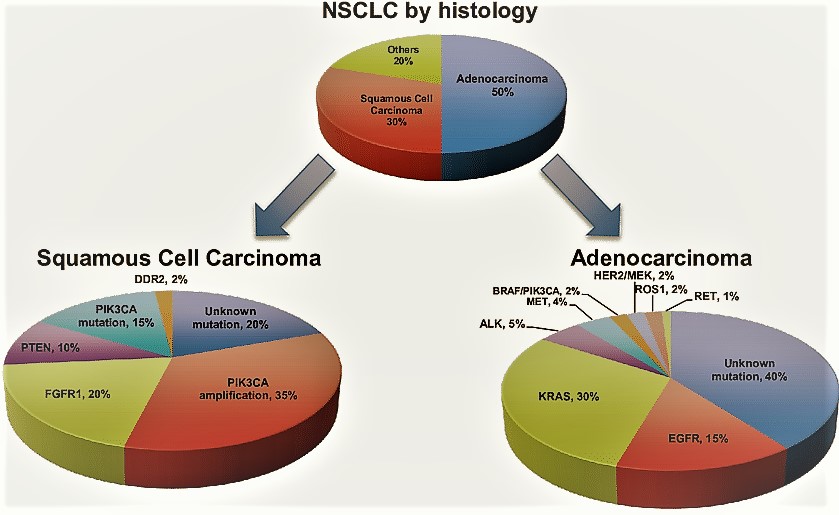NSCLs stands for non-small cell lung cancer, which comprises several types of lung cancers that are not small cell lung cancer. The main subtypes include adenocarcinoma, squamous cell carcinoma, and large cell carcinoma. Unlike small cell lung cancer, NSCLs tend to grow and spread more slowly.
Causes and Risk Factors of NSCLs
Various factors can increase the risk of developing NSCLs, including genetic predisposition, exposure to environmental carcinogens such as tobacco smoke, radon, asbestos, and pollution, as well as certain lifestyle choices like smoking and poor diet.
Signs and Symptoms of NSCLs
Signs and symptoms of NSCLs may vary but commonly include a persistent cough, shortness of breath, chest pain, wheezing, hoarseness, coughing up blood, fatigue, and unexplained weight loss.
Diagnosis of NSCLs
Diagnosing NSCLs typically involves a combination of imaging tests such as chest X-rays, CT scans, PET scans, and MRIs, along with a biopsy to confirm the presence of cancerous cells. Molecular testing may also be performed to identify specific genetic mutations.
Treatment Options for NSCLs
Treatment for NSCLs depends on various factors including the stage of cancer, overall health, and patient preferences. Options may include surgery, chemotherapy, radiation therapy, targeted therapy, and immunotherapy, either alone or in combination.
Prognosis and Survival Rates
Prognosis for NSCLs varies depending on the stage at diagnosis and other individual factors. While early-stage NSCLs have a better prognosis, advanced-stage cancers may have lower survival rates. However, advancements in treatment have improved outcomes for many patients.
Prevention of NSCLs
Preventing NSCLs involves avoiding known risk factors such as smoking, secondhand smoke, exposure to carcinogens, and adopting a healthy lifestyle with regular exercise and a balanced diet rich in fruits and vegetables.
Living with NSCLs
Living with NSCLs can be challenging, but there are various support resources available including support groups, counseling services, and educational materials to help patients cope with the physical and emotional aspects of the disease.
Research and Advances in NSCL Treatment
Ongoing research continues to explore new treatment options and advances in the management of NSCLs, including targeted therapies and immunotherapies that target specific genetic mutations and enhance the body’s immune response to cancer cells.
Importance of Early Detection
Early detection of NSCLs through routine screening tests can significantly improve outcomes by enabling timely intervention and treatment. It is essential for individuals at high risk, such as current or former smokers, to undergo regular screening to detect any abnormalities early.
FAQs
- What is the difference between NSCLs and small cell lung cancer (SCLC)?
- NSCLs comprise several types of lung cancers that are not small cell lung cancer, which grows and spreads more rapidly than NSCLs. Treatment approaches and prognosis differ between the two types.
- Is smoking the only cause of NSCLs?
- While smoking is a significant risk factor for NSCLs, other factors such as exposure to environmental carcinogens and genetic predisposition can also contribute to the development of the disease.
- What are the treatment options for advanced-stage NSCLs?
- Treatment options for advanced-stage NSCLs may include chemotherapy, targeted therapy, immunotherapy, and palliative care to manage symptoms and improve quality of life.
- Can NSCLs be cured?
- The prognosis for NSCLs varies depending on various factors, but early detection and treatment can significantly improve outcomes and increase the chances of long-term survival for some patients.
- Are there any experimental treatments or clinical trials available for NSCLs?
- Yes, there are ongoing clinical trials investigating novel treatment approaches, including targeted therapies, immunotherapies, and combination therapies, for NSCLs.
Conclusion
Non-small cell lung cancers are a diverse group of lung cancers that require comprehensive management strategies involving early detection, accurate diagnosis, and personalized treatment approaches. By understanding the causes, symptoms, and available treatment options, individuals can take proactive steps to reduce their risk and improve their overall health outcomes.





